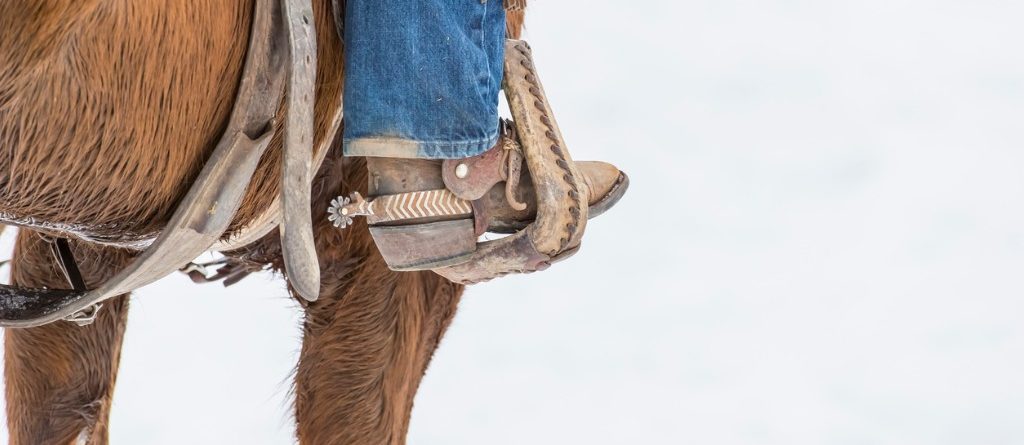For ranchers on a fall weaning schedule, considering factors that impact calf health and wellbeing can help prevent calf loss, according to Dr. Gerald Stokka, North Dakota State University Extension veterinarian-livestock stewardship.
One factor is changing weather conditions. In the northern Plains, cold rain, snow and mud can be a significant stressor to animal well-being.
“If inclement weather is forecast, the best choice is to not wean but to provide for extra feeding for both cow and calf during this time,” says Dr. Stokka.
The weaning process itself can also be a stressor for calves. There are two parts to the weaning process: removal of the ability of the calf to nurse and separation of the calf from the cow. Calves at 7 to 8 months of age receive a limited amount of nutrition from nursing. The beef cow at this stage has reduced milking ability due to the length of the nursing phase and to a decrease in forage quality.
“Recognize that calves nursing the cow at this stage is simply a calf pacifier, actual separation is the stressor,” says Dr. Stokka.
Fortunately, management of the cow herd can moderate stressors. Dr. Stokka suggests the following choices to uncomplicate the process of weaning and backgrounding:
Comingle the entire herd prior to weaning and feed cows and calves together.
Comingling calves in weaning pens that have not been raised together in the same pasture upsets the normal social structure and puts unfamiliar calves together in an unfamiliar environment. The most practical strategy is to feed cows and calves together in an environment that allows calves to learn feeding behavior from adult cows. The stress of commingling is reduced as new social structures are developed and a ration palatable to both cows and calves results in calves being more willing to eat than to nurse. Feeding calves this ration in the new confined weaning environment reduces unfamiliarity of the new environment.
Maintain some contact between calves and cows after separation.
Some producers reduce this separation anxiety by separating cows and calves over time. Separating cows and calves three times over a three-day period can help with this; however, most producers will not voluntarily choose this option due to time constraints. Keeping cows and calves separate but with nose to nose contact (fence line weaning) may reduce this stress as well.
Use vaccines that are necessary, effective, safe and recommended by your herd veterinarian.
Vaccination protocols do not define a health program, but are a tool used to reduce risk of catastrophic loss due to specific pathogen infections. Vaccine protocols should be based on risk of exposure, efficacy and safety of vaccines. Viral vaccines that contain IBR, BRSV and BVDV type 1 and 2 are commonly used in beef herds and have been demonstrated as being effective and safe when used in healthy calves.
There is less evidence that bacterial vaccines containing BRD pathogens are as effective. Many of these organisms reside naturally in pharyngeal (throat) regions of the animal and attempts to immunize animals to naturally occurring organisms appears to be somewhat equivocal. Consult with your veterinarian as to vaccine choices and protocols.
Spend time in the pens of newly weaned calves to familiarize calves and people to one another.
In spite of our best efforts at reducing stress some calves may become ill. Having people interact with weaned calves is important. Calves become familiar with that person and the person becomes familiar with the calves. Calves will display different behaviors. Some will allow close contact and some will respond by finding the limits of the pen. Persons involved with this interaction should move slowly, trying not to cause sudden movements, and avoid eye contact unless wanting animals to move. These interactions should result in the ability to move calves calmly and separate animals that need further attention.
Signs and symptoms of illness include animals not seeking feed, off by themselves, head down, ears drooping, nasal discharge and a sense that the calf is not well. Just one of these symptoms by itself is not a reason to separate and further examine the animal, but it may alert the caretaker to further observe the animal.
Treat calves with the appropriate treatment when observations result in a calve being separated and upon further examination needs a specific therapy approved by the herd veterinarian.
The number of animals in a pen also is a consideration as to symptoms of illness. The greater the number of animals the more difficult it can be to observe, find, and separate animals needing treatment. The ideal pen size has not been identified for weaning calves, however in the dairy business, calves will leave the hutch and commonly put in small groups of five head. Ideally, groups of 50 calves can be easily observed and identified for wellness. Group sizes over 100 head may complicate this observation process. In addition, sorting heifers and steers at weaning or shortly after weaning will remove steer-heifer interactions that occur.
If an animal is deemed ill and needing further examination, a restraint of some type is needed. Putting the animal into a squeeze chute allows for closer examination. Your veterinarian can help with defining rectal temperature considerations for treatment. Treatment with antibiotics for bacterial infections is indicated and again consult with your herd veterinarian to provide advice as to the appropriate antibiotic, route of administration, dose and withdrawal time.
Source: Drovers, By Elizabeth Cronin November 14, 2022
Photo: NDSU








